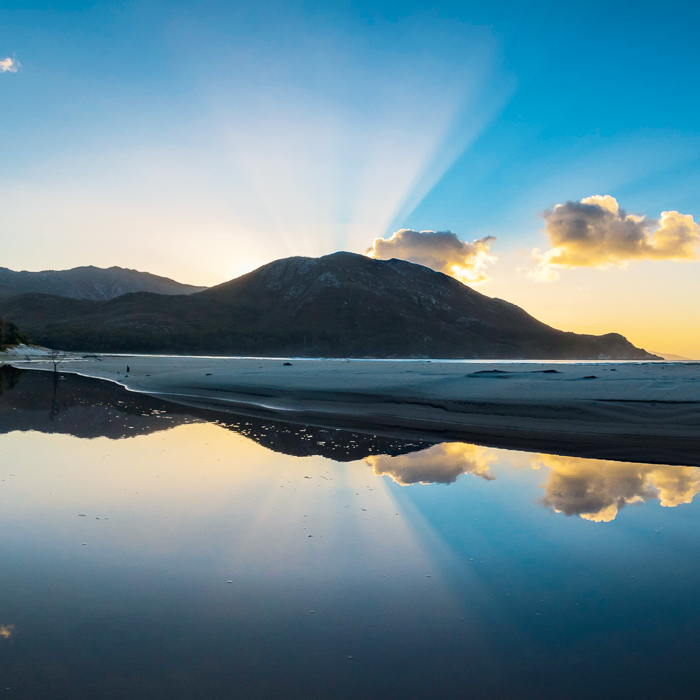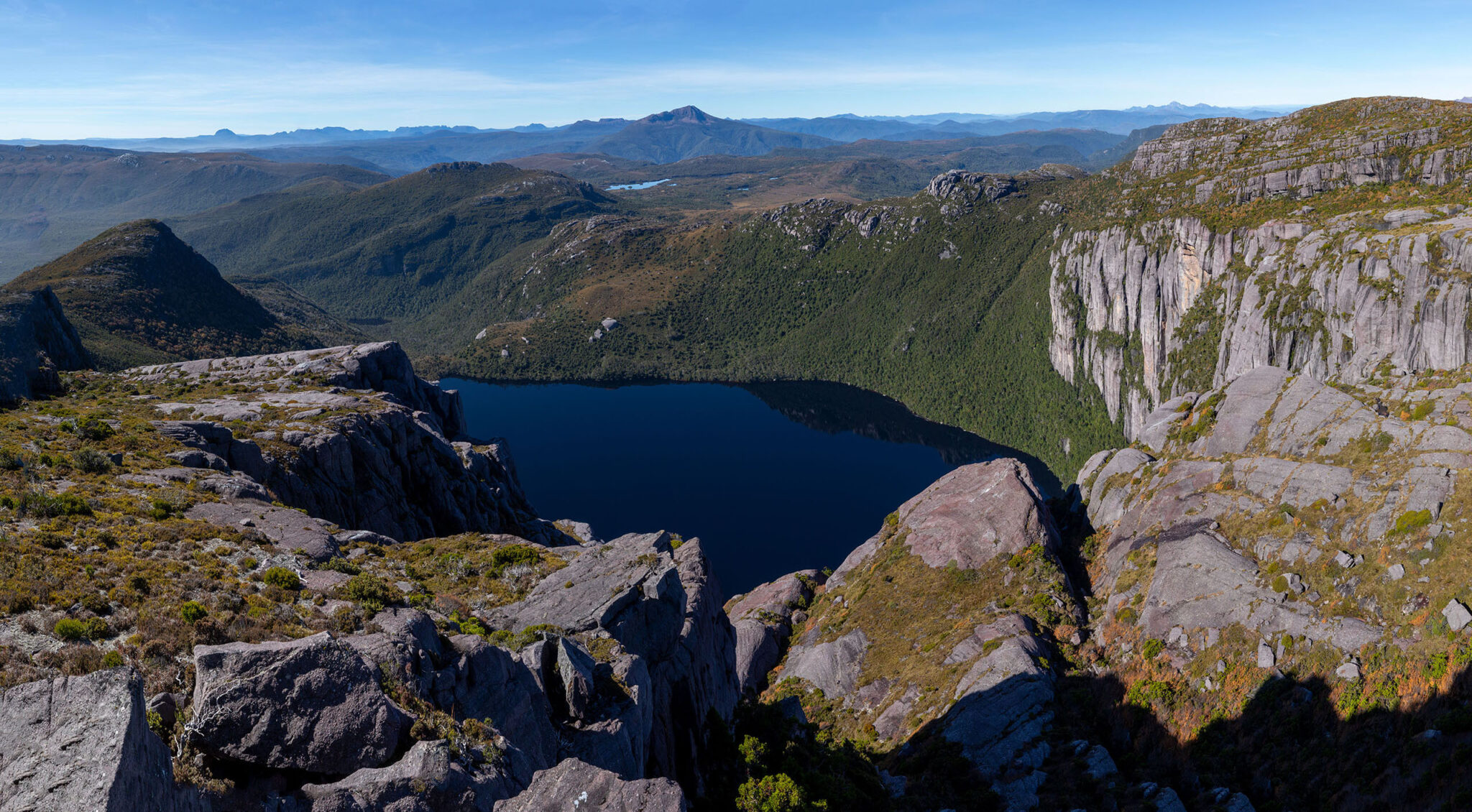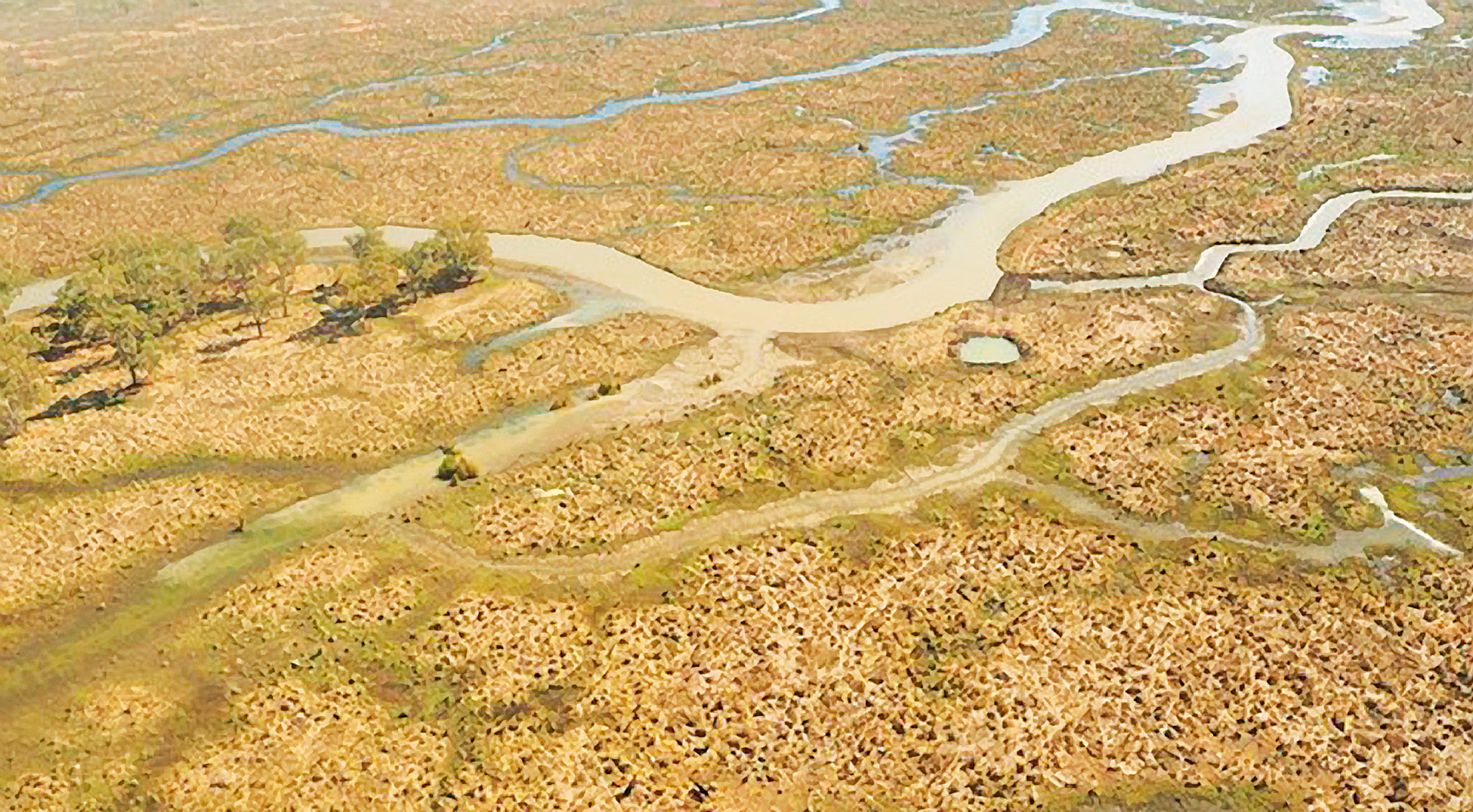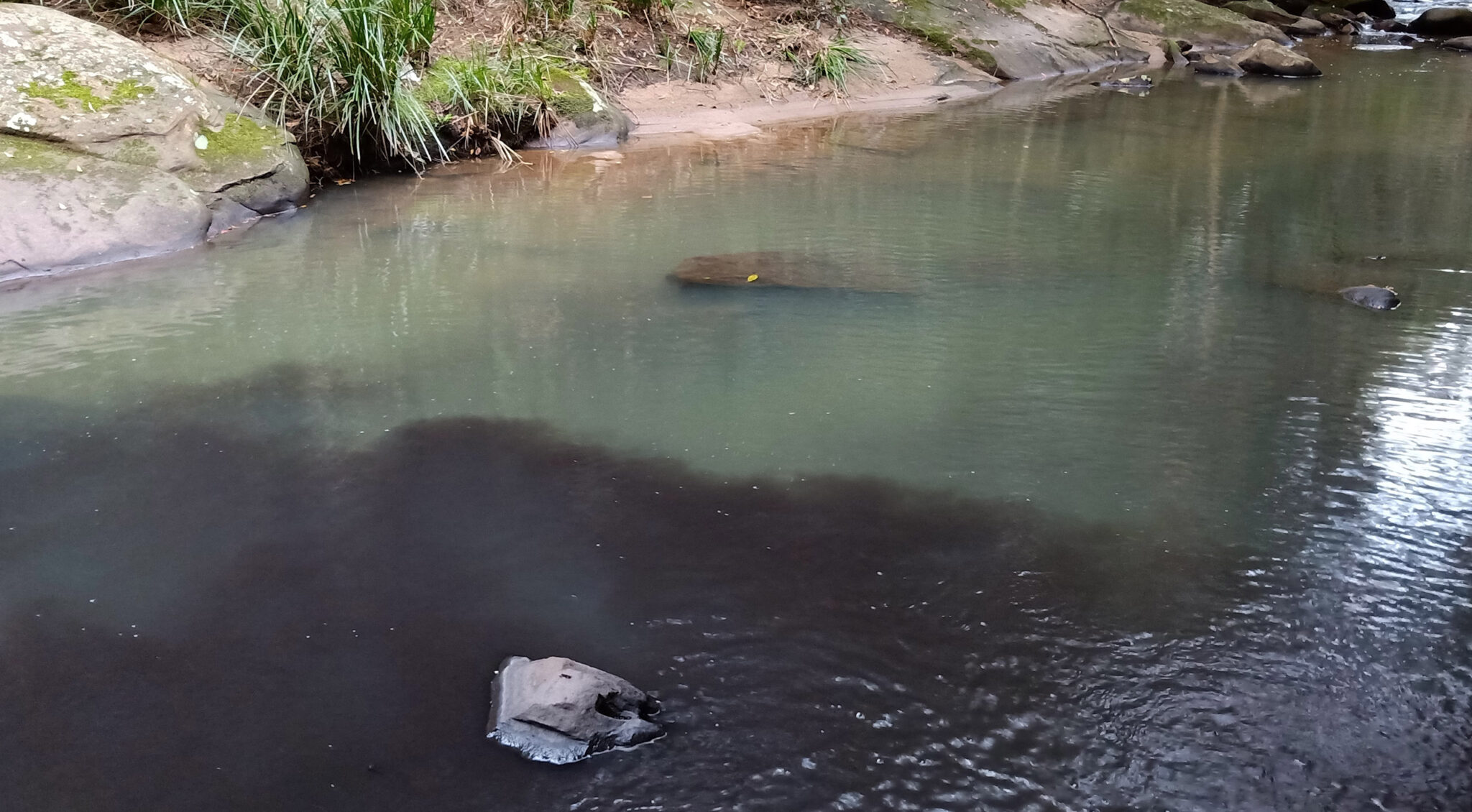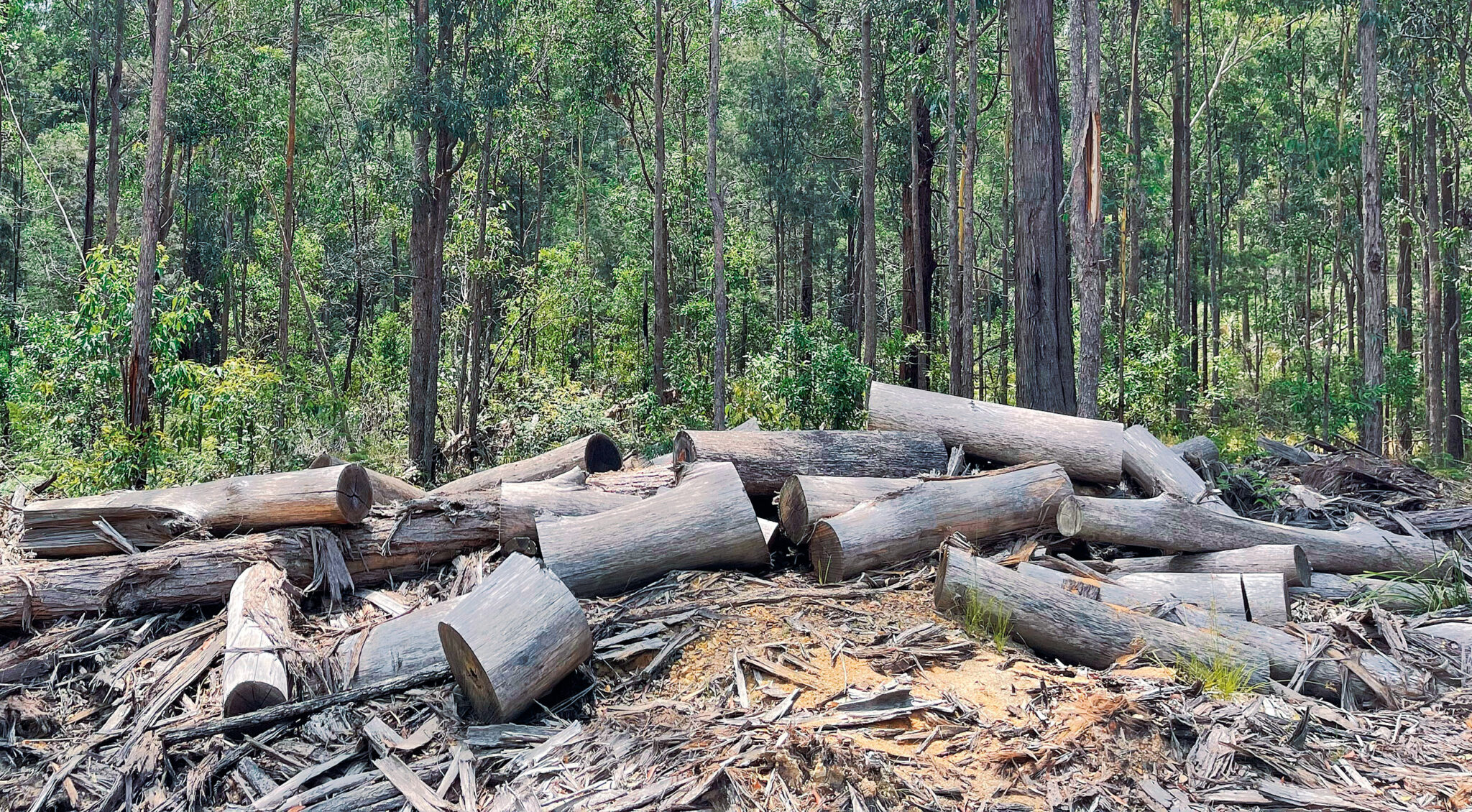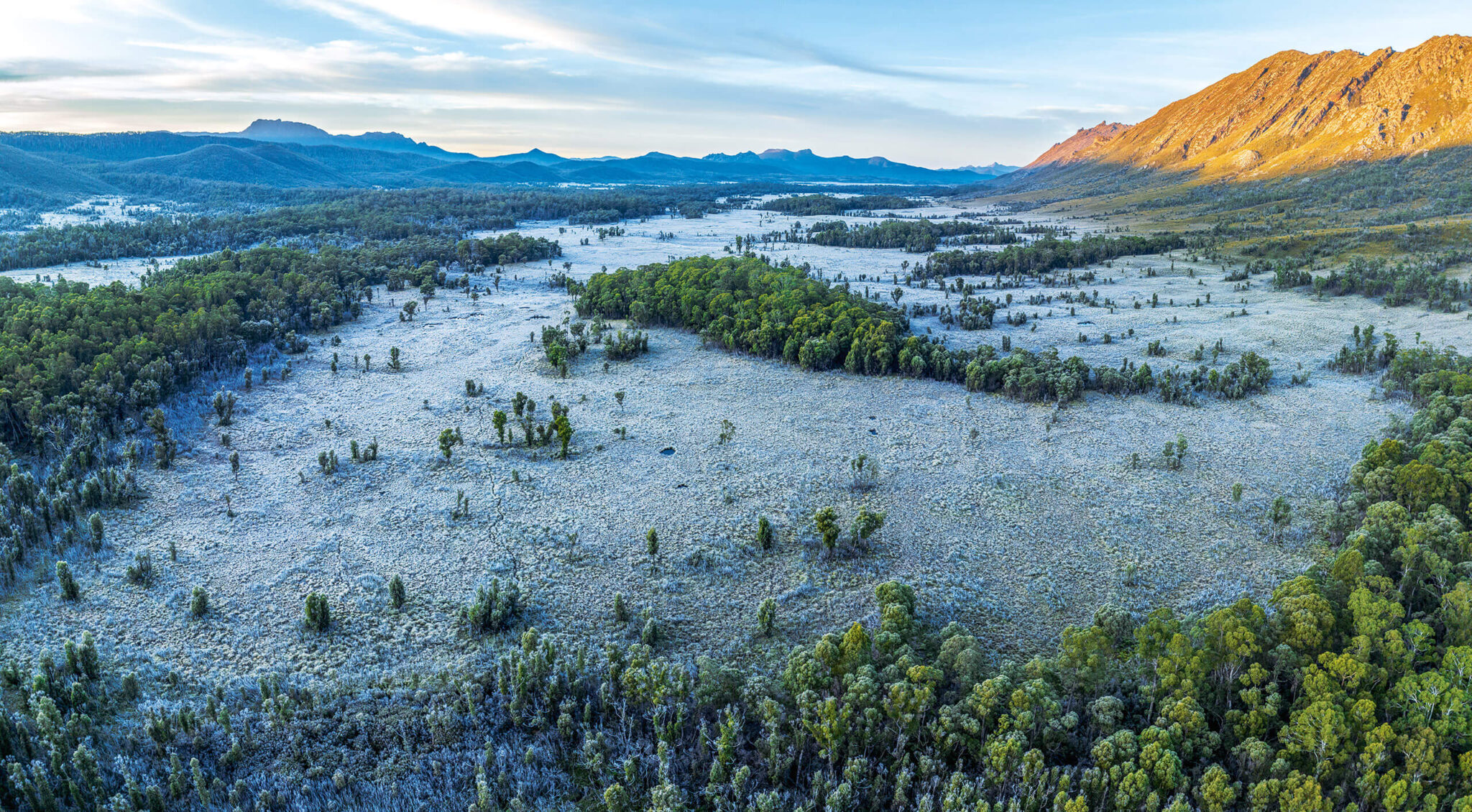Luxury Lodges Means Wilderness Lost - Part 2
Our national parks are under attack. The push for luxury lodges and other within-park accommodation, has gained nationwide momentum. In this, Part Two of a two-part series, we look at the root causes and broad implications of these developments.
Words: James McCormack
Images: Dan Broun, Grant Dixon, Martin Hawes, Craig Pearce, Wes Moule
(This story originally featured in Wild #179, Autumn 2021)
Title photo: Get set for the serenity of Tasmania’s South Coast to be shattered. Credit: Dan Broun
If you haven’t read Part One, please do so. It’s available here. Understanding much of the following content, as well as knowing the scale of the problem, is dependent on reading the first instalment.
“Areas like Mt Stirling are attractive because they are undeveloped. Wilderness is of incalculable intrinsic value, even if not all of us realise it yet. This is the message we have a duty to espouse no matter how unpalatable it may be to some initially. … Wilderness is not a commodity that can be packaged, marketed and sold without the loss of wilderness itself …”
Chris Baxter, editor of Wild from 1981 to 2001, writing about proposals to develop Victoria’s Mt Stirling in Wild Issue #54, 1994.
In Part One of this piece, we looked at lodge and other accommodation developments—both private and public, and past, present, and future—proposed within national parks around the country. We looked at Tasmania’s Southwest, where developments are proposed along the South Coast Track (SCT), the Walls of Jerusalem, Frenchmans Cap, Tyndall Range, and Lake Malbena. More lodges are being proposed along the Overland Track, and at Lake Rodway near Cradle Mountain, too. Queensland has already seen private development on the Scenic Rim Trail (SRT); more is proposed on Hinchinbrook Island’s Thorsborne Trail, and the Cooloola Great Walk is apparently up for grabs, too. Egregiously-sited private lodges have been proposed for Flinders Chase NP on SA’s Kangaroo Island. NSW is closing bushwalkers’ traditional campsites along its proposed—and likely to proceed—development of the Light to Light Track in the state’s southeast. Victoria is forging ahead with mini-villages in the Alpine National Park’s high country. And in the interim since writing Part One of this piece, the NT has called for expressions of interest to commercially develop the Watarrka Trail at Kings Canyon.
These clouds have long been on the horizon. I spoke at length with John Chapman, author of many Australian walking guidebooks and long-term Wild contributor, and he pointed me to something he wrote back in the ‘90s: “Where once the threat came from those who opposed parks like mining and logging, some industries now support parks but want the right to develop their business inside a park. [This] can mean that they effectively end up controlling some of the park thus alienating other users.”
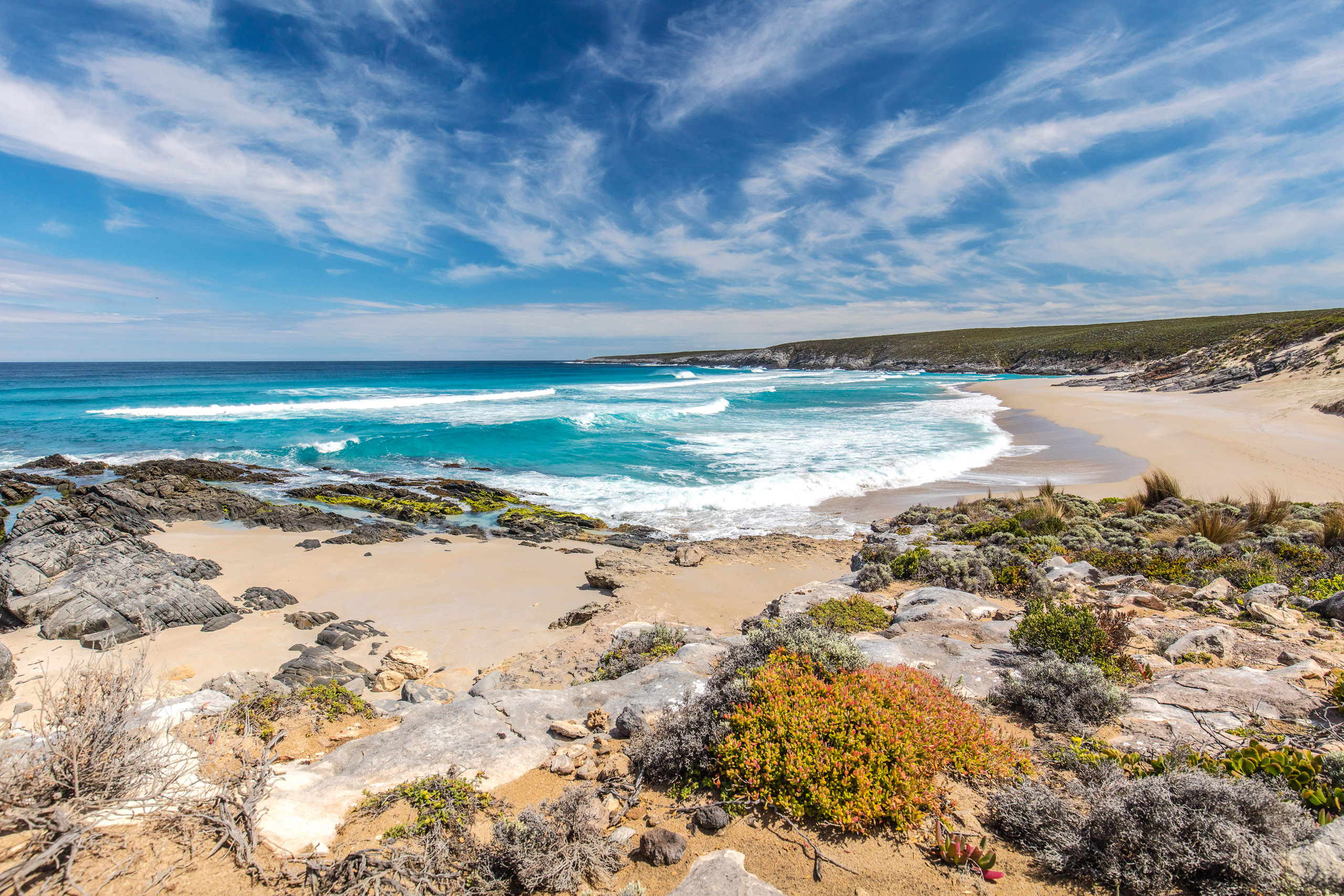
Unfortunately, under the guise of these lodges, that’s exactly what’s come to pass. So let’s look at the implications, commencing with the loss of wilderness. Actually, let’s take one more step back: What does ‘wilderness’ even mean? Here’s a simple, workable definition from Martin Hawes, Grant Dixon, and Chris Bell, stated in their book Refining the Definition of Wilderness: “Wilderness is land that is natural, remote and primitive.” But does this mean land utterly devoid of human modification? Such places are exceedingly rare. Most ‘wildernesses’ have, in fact, had humans living in them and modifying them for thousands or tens of thousands of years. It becomes valid, then, to ask to what extent modification impacts wilderness? Even walking has an effect. Footprints are left. Plants are crushed. It’s all a gradation, with no easy answer. Nonetheless, there’d be widespread agreement in the outdoorsy/green community—although perhaps the broader community might disagree—that building infrastructure impinges upon wilderness. It’s for this reason all Tasmanian Wilderness World Heritage Area Plans of Management prior to 2016 specifically banned huts within the Southwest NP.
There are, for starters, the lodges’ visual impacts. We’re not talking simple ‘huts’ here; typically they’re huge complexes of multiple, boardwalk-linked buildings resembling minor villages; in areas otherwise devoid of structures, the effects are jolting. Next up are the sounds of helicopters shuttling supplies—food, grog, linen, huge gas bottles, poo—and, perhaps in future, lodge guests as well if operators struggle for revenue. (Note, however, that from the outset, choppers will be the primary transport mode for Lake Malbena’s proposed Hall’s Island lodge.) Even for lodges where helicopters aren’t involved, there’ll be ATVs laden with supplies—and again, potentially guests—buzzing through the bush. As already seen on Queensland’s Scenic Rim Trail, those ATVs will need new tracks, wider than any walking trail, further scarring the landscape.
“There’s an acoustic component to the whole idea of wilderness.”
And consider this: Whatever the actual ground footprint of these lodges, if choppers—which you can’t simply block your ears to—service a string of them, their sound paths potentially cover tens of thousands of hectares. And that’s before considering their role in construction; the Three Capes project, for example, involved—this isn’t a typo—17,400 individual heli flights.
The impacts are huge. As James Tremain from the Nature Conservancy Council told me, “There’s an acoustic component to the whole idea of wilderness.” He’s right. We often think of wilderness in terms of the visual, of seeing tracts of glorious, undisturbed forest. We also think of it in terms of vast, pristine ecosystems. But wilderness soundscapes—places where you can, for an unbroken week or more, never hear anything mechanical, never hear anything but the wind, or the waves, or a howling dingo, or your partner’s voice, or, god forbid, your own thoughts if you’re out solo—are precious, too. Sadly, they are increasingly rare.
There’s no doubt that wilderness loss is, to a certain extent, subjective. Some people find the noise of helicopters far more abrasive than others. But this subjectivity doesn’t mean wilderness loss is completely unquantifiable. Hawes, Dixon and Bell, while examining the SCT proposals in Refining the Definition of Wilderness, drew on a methodology called ‘wild character’ mapping. They scaled, on a grade of 1-20, the area surrounding the track according to attributes such as biophysical naturalness and remoteness, and then mapped the results. The impacts were huge. Tens of thousands of hectares would see their wild character reduced, without even accounting for the impact of helicopters.

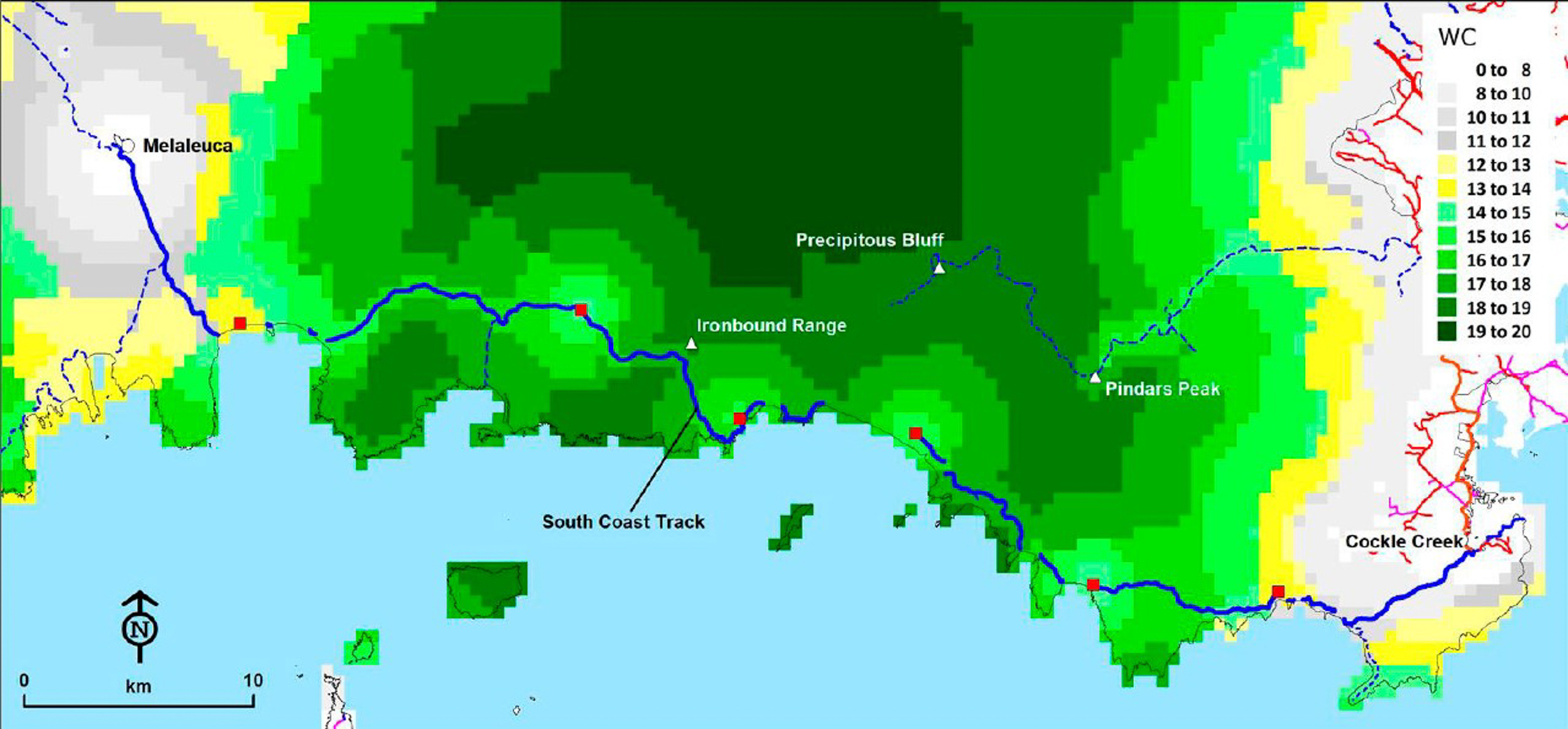
Another element here is the narrowing of the ‘recreational opportunities spectrum’. Grant Dixon explained the term to me, which is used by park authorities and planners who aim for a broad range of recreational activities with varying levels of self-reliance, including entirely self-reliant wilderness-based experiences. The problem, said Grant, “is that wild places are few and far between. What’s wrong with preserving them, and having those range of experiences, rather than turning everything into variations of the same?”
Speaking of opportunities, capped independent walker numbers—implemented to preserve the ‘experience’ for lodge guests—and fees on commercially-developed tracks mean equal access is another casualty. There are broad variations here: Although I believe private development along Queensland’s SRT shouldn’t have proceeded, at least it created additional campsites for independent walkers. That’s not the case with many proposals, however, especially in NSW.
Since I wrote the first instalment, the cost for a party of two to walk the Green Gully Track—which the Parks’ website states is possible only if you stay in the huts; you technically can’t camp on it—has since risen to $900. Now some will, and have, argued that $600 or $900 really isn’t that much. I disagree. For many people, it is. Anyone on the dole. Anyone on benefits. Anyone with kids. Anyone on an average working-class wage. The issues with equity are obvious. Now, I’m not saying all other developments will go as far as Green Gully, but if the trend spreads, there’s one particularly-affected group that I’d like to highlight: young people. While many older walkers might be able to stump up the fees, students and the like will be potentially locked out simply because they can’t afford these accommodations. And here’s the thing: What does that mean for the environmental movement in future? So many ecologically-minded people came to the cause because of bushwalking trips during their student days. I’m not saying young people will no longer head out bush, but then again, we don’t know exactly how much these proposals will proliferate.
On the subject of limiting access, bushwalkers’ campsites are also in the crosshairs. The Three Capes—noting it’s the model for multiple proposed developments elsewhere—shut many long-used campsites. There were five in the area; Tasmania’s Parks and Wildlife Service (TPWS) decided to close them all, replaced by a single campsite with its capacity restricted to just six tents. Local walkers were furious. Eventually one site, Wughalee Falls was re-instated, and a new campsite was created, but only after considerable protest.
“Campsite closures will inhibit spontaneity and people’s freedom.” Gone will be the days when you decide to spend an extra day out because of bad weather, or chance upon a site at midday that’s so beautiful you spontaneously decide to set up camp early.”
Reducing, or eliminating entirely, ‘free’ camping seems a common tendency among proposals to commercially develop tracks. Sometimes, there are good ecological reasons for doing so. But not always. Far from it. Author John Blay, as ecologically-minded as anyone, told me the current system of self-selecting sites on NSW’s Light to Light Track “has worked well. Really well. Nobody’s spoiled the visual splendour of the area. There are lots of beautiful little campsites amongst the melaleucas where you can have a primitive campsite without mucking it up.”
Those sites will be closed once lodges along the track are built. It’s hard not to see this as a cynical exercise to drum up business by reducing competition. As John Chapman said to me, “The commercial companies come in and say, ‘The only way we can get clientele is to make it exclusive and lock everybody out.’”
Even when independent walkers aren’t shut out entirely, herding them into limited campsites with increased restrictions comes at a little-recognised psychological cost. Campsite closures on the Light to Light Track, Kim Taysom, a local National Parks Association member, told me, “will inhibit spontaneity and people’s freedom.” Sites will likely need advance booking. Gone will be the days when you decide to spend an extra day out because of bad weather, or chance upon a site at midday that’s so beautiful you spontaneously decide to set up camp early.
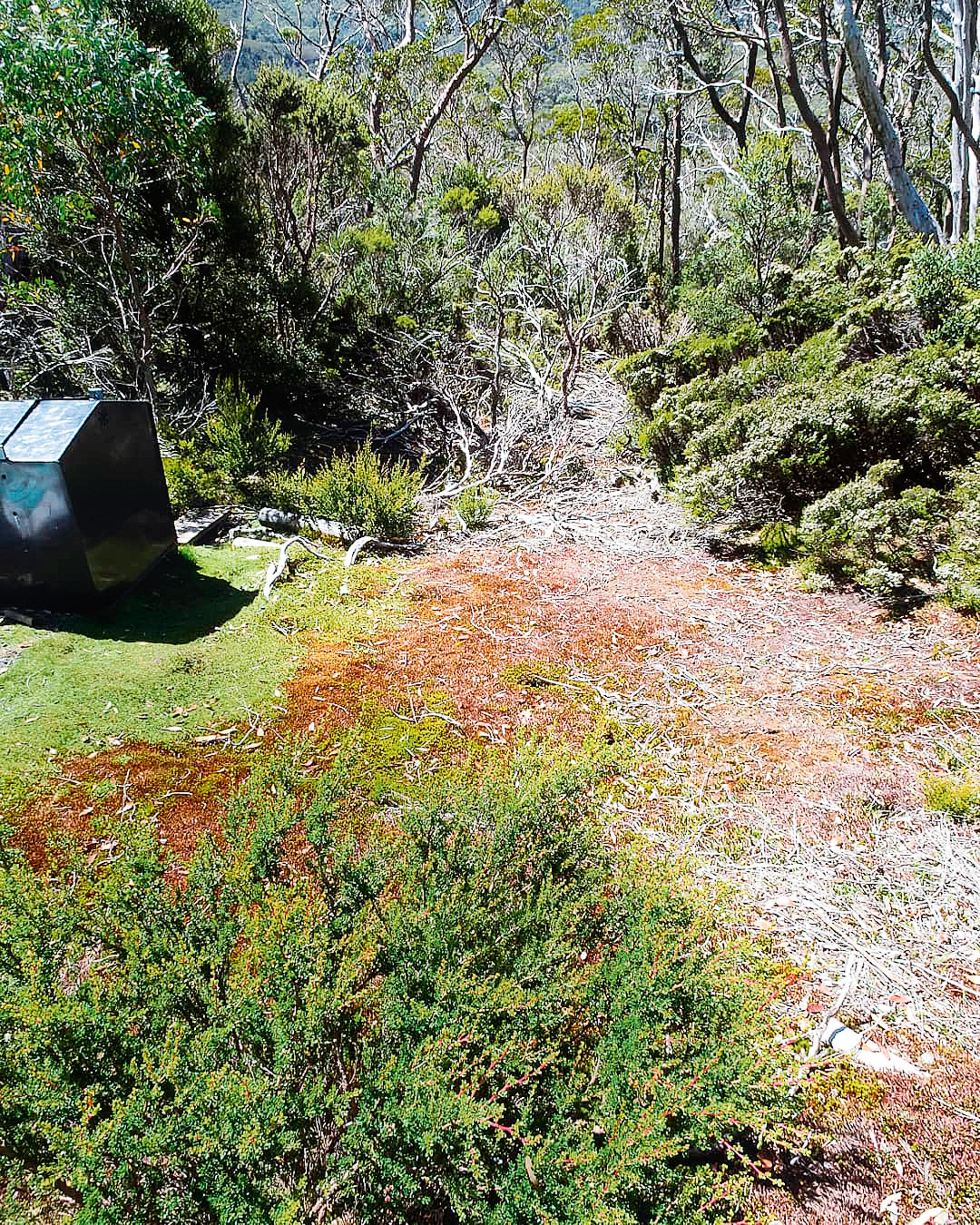
There’ll be increased numbers on these tracks, too. Now, popularity as an issue is nuanced. More people enjoying nature is a good thing. That said, as trail usage increases, there’s no doubt the experience changes. Solitude can disappear. The wilderness experience alters. And not all tracks can deal with the traffic, either. Often, they’ll need ‘hardening’ to cope. Even so, hardening tracks because of increased traffic is one thing; doing it so lodges can attract clientele not interested in challenging walking is another thing entirely. Few keen bushwalkers I know like walking on manicured paths; most prefer the challenges of tracks with—at the least—rough imperfections. But such tracks aren’t always agreeable to lodge developers. Much of the Three Capes Track, for instance, is preposterously over-engineered, far more path than track. Then there’s the rumour I’d heard that Ian Johnstone, the proponent of lodges along Tasmania’s South Coast Track—a track defined by its very challenge—pushed for a feasibility study to have it re-routed around its most challenging section, the Ironbound Range. Was this true? I didn’t know, so I put the question to Jason Jacobi, deputy secretary of the Tasmanian Parks and Wildlife Service. He confirmed it was. The TPWS to its credit, after inspecting the proposed route, indicated it wasn’t feasible, and further actions were dropped. Still, it’s troubling that re-routing the most challenging section of one of Australia’s most challenging walks was even considered.
Moreover, the hardening of tracks, and the ‘dumbing down’ of them, has an unintended ecological consequence. If you ‘upgrade’ one track, John Chapman told me, walkers wanting more challenge don’t just ‘go away’; they go elsewhere. John actually wrote a paper on ‘displacement’, the idea that bushwalkers unsatisfied with the lack of challenge move onto other rarely-visited places. And as numbers in those hitherto pristine areas rise, so too does the damage. New tracks are created. True wilderness values fall.
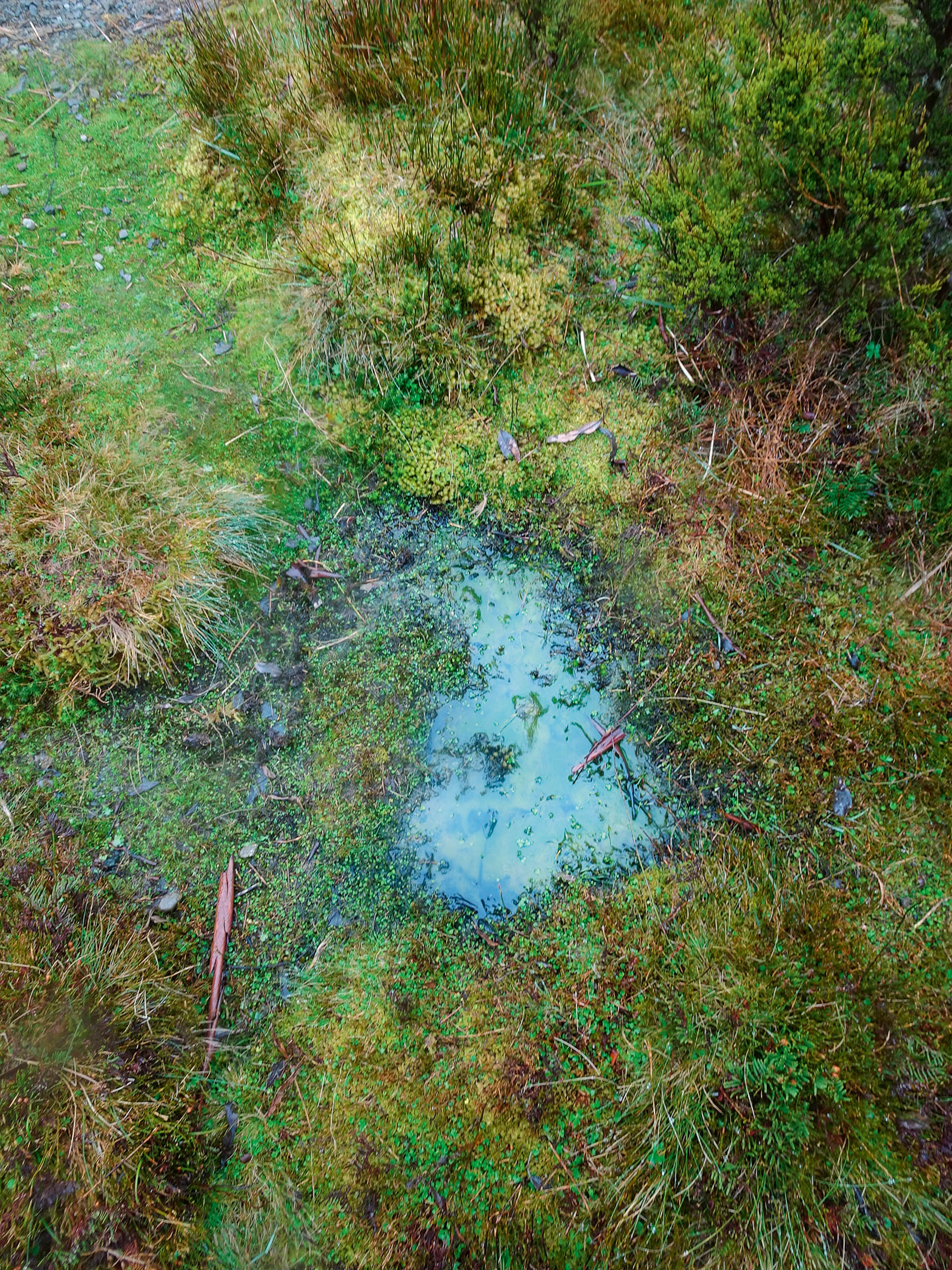
And then, of course, there are the lodges’ direct ecological impacts. For starters, there’s the clearing of vegetation: for the lodges themselves; to build heli-pads and/or ATV tracks; and to create suitably marketable views. But it can go far further, as illustrated by a damning 2020 audit by the Tasmanian Parks and Wildlife Service of huts along the Overland Track owned by the Tasmanian Walking Company (TWC). For all TWC’s talk of ‘caring for the environment’, of ‘sustainability’, of ‘eco-lodges’, of ‘stewardship’, it seems no more than greenwashing given the litany of failings the audit outlined: greywater filtration systems only partially installed; filtration bins not adequately secured or sealed; outflows not clear liquid; overflows of high-nutrient water from uncovered food waste bins; inadequate sand filtration; pipes clogged with grease; dead myrtle forest downstream of greywater treatment trenches; evidence of patchy, short-term repairs; algal growth and oils in surface water at drain sites; native trees used bracing rubbish platforms. Honestly, the list goes on. Remember, this doesn’t come from some ‘rabid greenie’; it’s an official government audit. Sadly, these same huts are cited as being “subject to stringent environmental guidelines.”
It was Wes Moule, a Tasmanian guide and food dropper—he lugs in supplies for adventurers heading deep into the wilderness—who alerted me to the audit. In fact, it was Wes’s videos of breaches that likely led to it. Chatting with him, the outrage in his voice was palpable. He’s seen (and smelt) many of the breaches firsthand (check out his Facebook feed: facebook.com/wes.moule or #taswalkingco). Blackwater waste (ie poo) is one of the problems; it’s meant to be choppered out from the lodges, but the poo pods can tip and spill, causing sewage overflows. Greywater, too, is a major issue, says Wes. Some comes from cooking and cleaning, but its primary source is showers. Showers are fundamental to the lodges’ marketability; that’s why every promotional blurb stresses them. Now, I happen to like showers. Hot showers, anyway. But that doesn’t mean they’re appropriate in the wilderness. Showers—full of soaps, shampoos, cosmetics, and god knows what else—account for a huge proportion of the lodges’ resultant greywater. And how is the shower water made hot? Sometimes it’s solar-heated. Often, however, it’s gas-heated. The shuttling of gas bottles into and from the lodges is a driver of increased helicopter traffic, because, unlike food, there’s no feasible way to get the huge bottles in any other way.
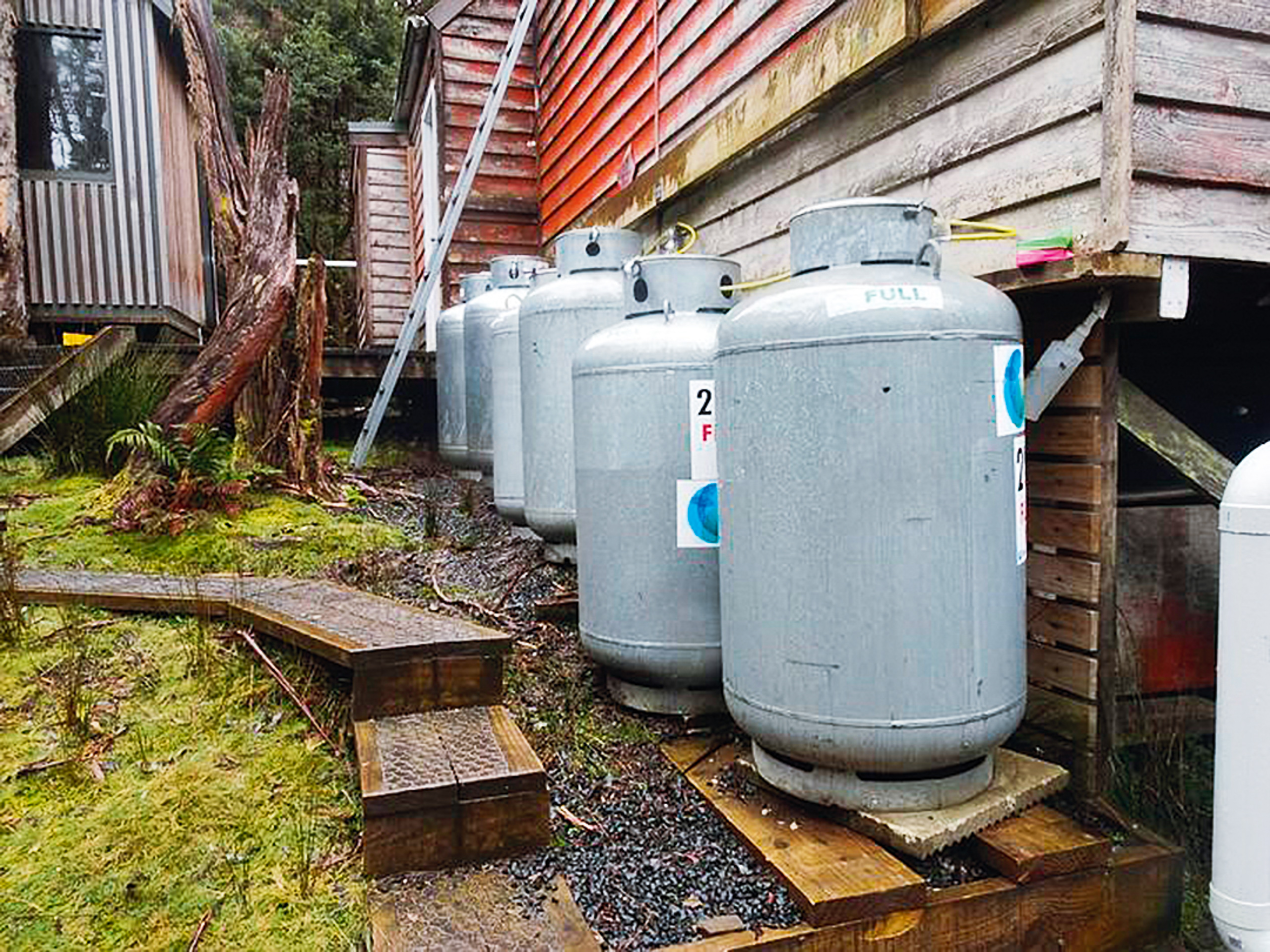
In the audit’s wake, the TWC says it’s recently addressed the issues. And it’s installed new greywater systems. Are they better? Possibly. Hopefully. But we don’t know for sure; Wes told me that despite water quality tests having been done, they won’t release the results. Meanwhile, what we do know is that the old, failed evaporative beds for the Overland Track huts still lie in situ. So, too, do their contaminants.
SO WHAT’S DRIVING THE PROCESS? Well, it’s certainly not community-wide popularity. While guests staying in these lodges no doubt have pleasurable experiences (and I can in many ways understand why), in terms of broader community support, a 2020 survey undertaken for the Victorian National Parks Association (VNPA) is illustrative. Just 4% of respondents believed the best use for Victoria’s state forests was commercial tourist infrastructure. Granted, it was discussing state parks rather than national parks (but developments in the latter would likely have even less support). The written responses to the Falls to Hotham Alpine Crossing Draft Master Plan are also revealing: of the 229 received, nearly 90% were strongly opposed. For Tasmania’s Lake Malbena/Hall’s Island development, of 1,346 submissions, just three were supportive. And then there’s the example of the sheer scale of turnout for protests against lodges on both Malbena and Kangaroo Island.
The obvious driver, however, is profit. Now, I want to be clear on this straight up: I’m not against profit per se. Nor am I against it in national parks, for that matter. While I am black and white in terms of my opposition to any private infrastructure being built in our national parks, that doesn’t preclude all profit from within them. Moreover, many operators—guiding companies, instructors, educators, and more—run their outings with far greater environmental responsibility than the general public usually does. And here’s the thing with profit: The green movement has long argued more money can be made from forests by protecting them rather than logging them. In doing so, environmentalists implicitly acknowledged there’s a role for business in our national parks. There is no reason that for-profit individuals and groups can’t operate reasonably within our national parks provided it’s happening in an environmentally-responsible fashion, and that it doesn’t involve the alienation of public lands, nor impinge upon the rights and wilderness experiences of other users.
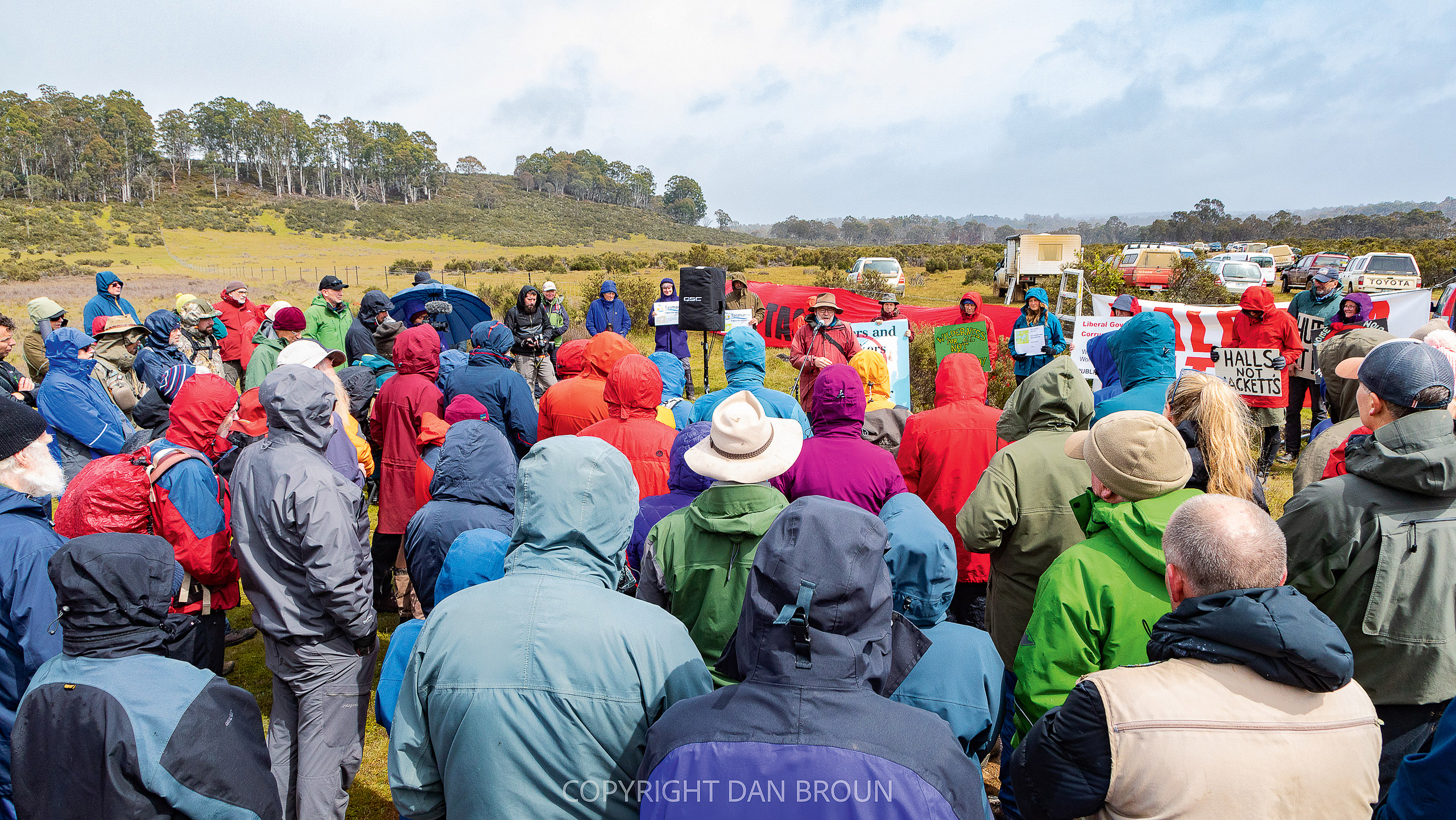
But unfortunately, that’s not what’s happening with these lodges, and profit is at the heart of the problem. This isn’t being done for public utility. Nor for conservation or environmental protection. And not really, as I’ll get to later, to create jobs, because there are better ways to create even more employment, just without the same deleterious impacts. No, it’s being done because there’s a buck to be made. That’s it, pure and simple.
For-profit accommodation in national parks engenders entirely different outcomes to infrastructure created purely for public utility. Personally, I can see a space in some national parks for occasional low-key, public, non-profit huts similar to some of those run by NZ’s Department of Conservation. I’m stressing low-key here. Small, basic huts; one or two rooms; relatively spartan; cheap; not at all like the huge, for-profit public complexes on the Three Capes Track costing $165 a night, nor at all like developments proposed for the Light to Light, or Falls to Hotham. I’m instead talking huts with small environmental footprints. Huts that don’t need their profitability ensured by being sited in questionable locations, or by excluding other walkers, or by requiring track modifications, or by needing tree clearing to create marketable sunrise or sunset views, or that need showers and sumptuous dining and frequent servicing by choppers and ATVs. And when I say, “I see a space,” for low-key huts, I’m not saying they should be built. I’m not ‘boosting’ them, nor calling for their construction. I’m just saying I’m aware others want huts of this style, and that I’m open to discussing them in appropriate circumstances, especially in areas where heavy usage is causing environmental degradation.
But back to profit. I’m not going to dwell on this that much; it’s so fricken obvious profit is the key driver. I will make two points, though. Firstly, if making a dollar becomes the major determinant for how we manage our parks, it can easily overrun what I believe are the true goals of our national parks—conservation and, secondarily, recreation. The chances are high that management of national parks will shift away from focusing on conservation, and reprioritise instead private sector demands for greater commercial gain. It can also encourage fund diversions that affect other parks; reports exist that the immense cost of the Three Cape Track meant that funds for track construction and maintenance elsewhere in Tasmania almost dried up entirely for years.
Secondly, left unbridled, the profit motive is relentless—I’m not saying this pejoratively; even its greatest boosters say this is capitalism’s strongest feature—and it has no natural endpoint. There’s always another buck to be made. It means any development proposed now is likely to be the wedge’s thin edge, driving demands for even more development in national parks. There will be pushes for more facilities. More ‘access’. More tracks to be ‘opened up’. For tracks to be modified and made easier, so that more paying clients will use them. Even on tracks where huts already exist, there’ll be demands for more huts. On the Overland Track, for instance, the five already-established huts aren’t enough for the TWC; they are now pushing for another six.
Once the genie’s out of the bottle in terms of lodge developments, it will be hard to put back in. And although some proposals have resulted in increased opportunities for independent walkers (for now, anyway, but who knows what will happen if a lodge’s profitability seems threatened by ‘freeloaders’ camping nearby), there’s zero guarantee future lodge developments will.
There’s bracket creep, too. For instance, what exactly is a ‘standing camp’ (the initial proposition for many Tasmanian developments)? In theory, it means the structure can be dismantled. In practise, however, these camps are often left in place year-round; they can be, by any common sense definition, huts. This is the case at Malbena where, as The Wilderness Society points out, the proponent—in its Develoment Application (DA)—”… fails to establish why the proposed structure should be considered a standing camp and not a hut.”
Even so, ‘hut’ sounds quaint. So does ‘eco-pod’ (the initial structures proposed in Flinders Chase before they morphed into something preposterously larger). ‘Standing camp’ sounds rustic, too. But in terms of bracket creep, again the Three Capes is instructive. The DA submitted in 2012 said the private infrastructure at each overnight ‘node’ would be a “hut or standing camp that can accommodate 13 people”. Note the ‘a’. Note the ‘13’, too. Then look at the scale of the resultant lodges; the span of Cape Pillar’s exceeds 100m.
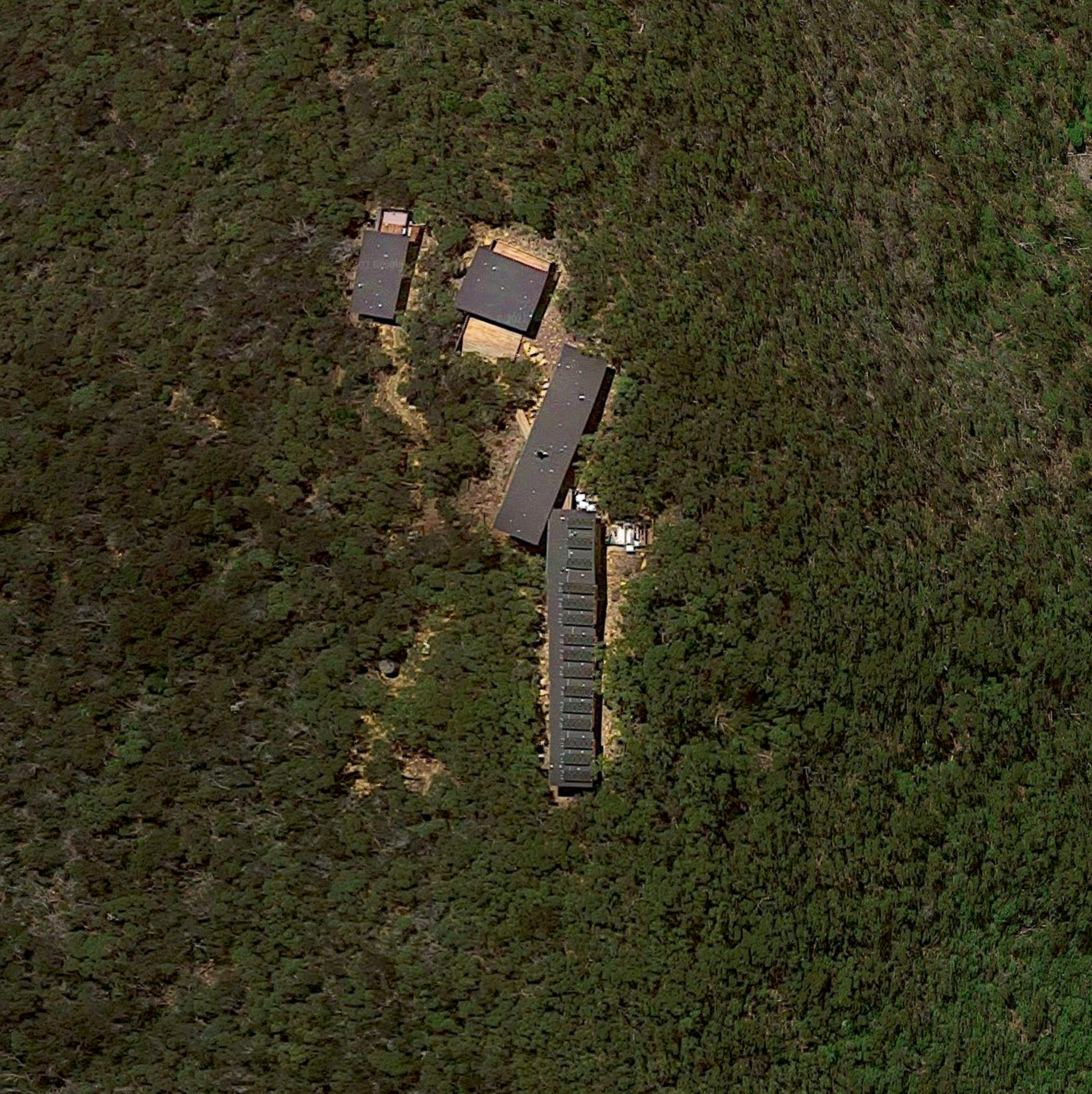
Don’t think I’m alone in calling these ‘huts’ lodges, though. “Cape Pillar Lodge” and “Crescent Lodge” are the official names for the TWC’s Three Capes accommodation. What’s curious, however, is that in the entire 2012 DA for the Three Capes there’s not a single instance of the word. Hut, yes. Standing camp, yes. Lodge, no. Hmmm, I wonder what changed.
Here’s another word that’s intriguing in the radically shifting frequency of its usage: Luxury. When politicians and developers talk to community groups about why the lodges they’re proposing are necessary, luxury is rarely mentioned as a rationale. This changes—strikingly—once they’re pitching to potential customers: Luxury is now front and centre of their marketing.
Like profit, however, I am not against luxury. Let’s face it; it can be pretty nice. I have been known to enjoy a fine wine or two myself (sometimes more). I don’t mind a hot tub, either. Nor the odd extravagant dining experience. I’ve even—Shhh!—enjoyed staying in a few five-star digs. The key thing, however, is that luxury can, and should, be provided for outside park boundaries. But the backers of these developments specifically don’t want that. Bob Brown told me he’s suggested a dozen alternate locations in beautiful environs where proposed lodges could be built. No interest, however, was shown. And here’s the reason: What lodge owners are selling is the very notion of luxury within the park. They don’t want lodges a kilometre outside park boundaries; they want them a kilometre (or ideally more) within them.
There are specific reasons for this. Firstly, the marketing is already done for developers. As VNPA Director Matt Ruchel told me, “Everybody knows national parks are great. Even if it’s not particularly spectacular or a unique ecosystem, the fact that it’s a national park actually means a lot. You’ve got a brand.”
That isn’t the sole reason developers love national parks—they gain monopoly rights, too. Along a track within a park, or even a park as a whole, there is little, if any, competition. We don’t (at least yet) have proposals for lodges from four competing companies sitting side-by-side. So once granted, these lodges have no competition, except perhaps from independent walkers who want to camp, hence the push to close campsites.
And here’s another plus in developers’ eyes: national parks are ‘greenfield’ sites. The term refers to undeveloped agricultural land or forests, with developers prizing the freedom such sites offer. There are no pesky local residents to deal with. No existing infrastructure to work around. I’d never thought of national parks as ‘greenfield’, until I heard it last month (Feb 2021) while watching a video—light on details but replete with a beat-heavy soundtrack seemingly more suited to the reality TV show Survivor—spruiking for private investment in the NT’s Watarrka NP. Now, to be clear, Watarrka—jointly-managed by NT Parks—lies within the traditional lands of the Matutjara People; it’s not my role to tell them what to do with their land. What I do know, however, was that referring to a national park as ‘greenfield’ was both jarring and illuminating, laying bare the mindset of developers.
ONE REASON PROFFERED FOR THESE DEVELOPMENTS is the income national parks derive from granting leases. This needs to be unpacked, however. Firstly, it’s worth reiterating that although land for these developments is being technically ‘leased’, the leases run up to 60 years. They are defacto sales.
Secondly, should national parks be sold off to pay for their upkeep? Well, no; they’re already paying their way. Don’t take it from me, though. Take it from NSW’s Environment Minister, Liberal MP Matt Kean, who—while referencing the state’s 2019-20 budget—stated that national parks contribute $19.5 billion annually to NSW’s economy. 19.5 billion! That’s serious coin. Clearly, national parks are already more than paying their way.
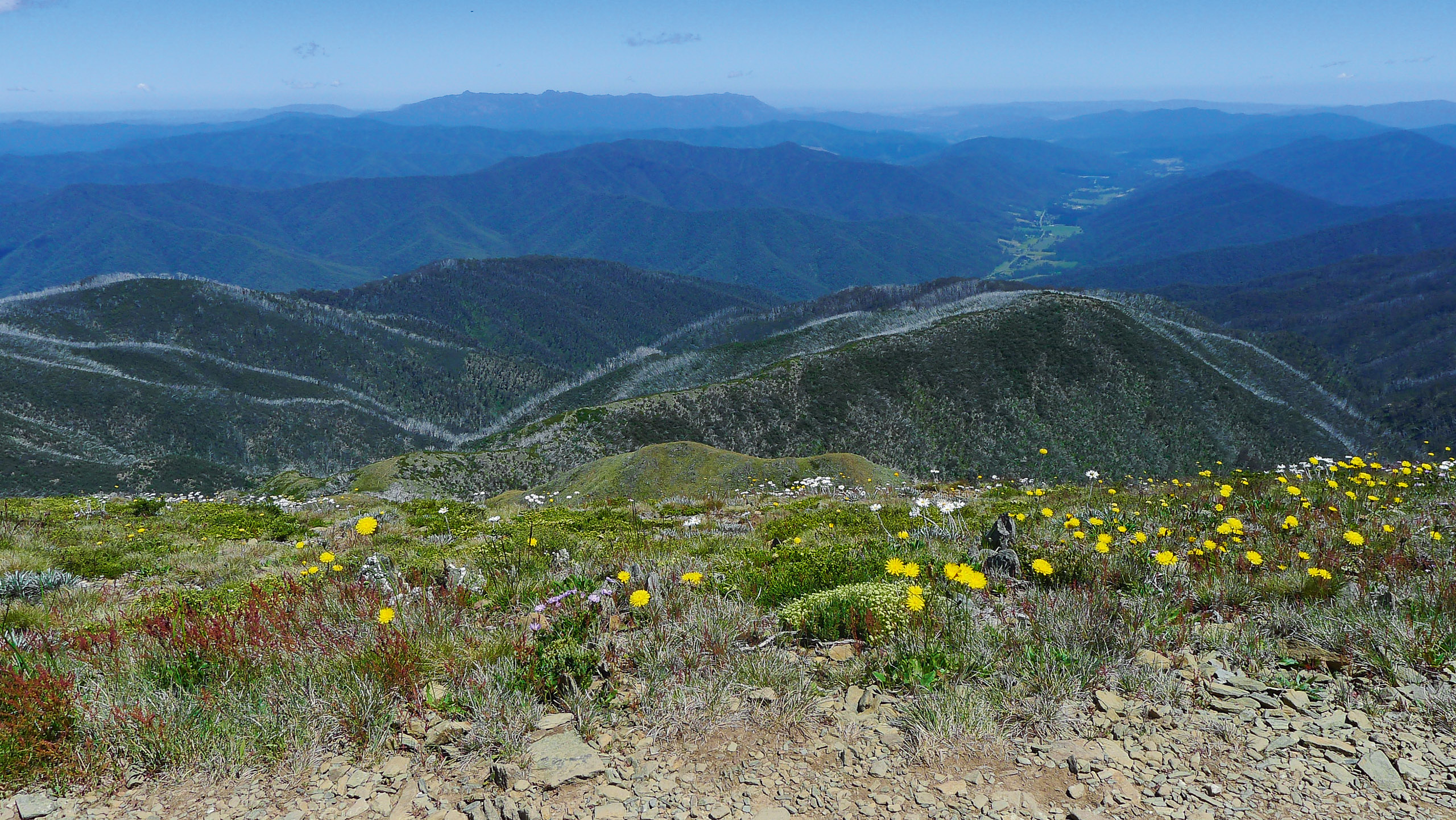
There’s also the argument that even if national parks don’t pay their way (which they do, but let’s run with this anyway), should they have to? To my mind, even if wilderness provides no economic benefit—even if it’s an economic cost, even a big one—it’s worth preserving. As individuals, we constantly make trades that cost us: We don’t pay for pricy meals at fancy-schmancy restaurants expecting an economic return. No, our return is the intangible joy the meal brings. So why expect wilderness to be revenue positive? In short, even if it costs us, wilderness is worth preserving for the non-economic rewards it ultimately brings.
In any case, do these developments actually ameliorate the costs of running national parks? Part of the tragedy here is that public land is being sold off so cheaply. While the sums involved are usually kept secret, citing ‘commercial-in-confidence’, when they’ve been made public they’ve proved appallingly small. Look, for example, at the rates charged for Lake Melbena’s Hall’s Island. Tasmanian Parks Minister Roger Jaensch recently admitted the 10ha of pristine public land involved were being leased for just $20.20 a week; once development is approved, this will rise to $76 a week. For ten hectares! That’s some rent deal! As Bob Brown told me, “Why pay half a million dollars, or a million, let alone ten million, for a site outside a national park, when you can get it from an irresponsible Minister for the Environment or Premier just by having a series of pleasant dinners and talking about jobs?”
And here’s the kicker: Not only are the payments peanuts, governments usually kick in millions of dollars to subsidise these developments, with the stunning irony that these funds are then used to alienate the public from the very land their tax dollars just helped develop. For example, the NT’s Watarrka development is getting $5 million of public money coughed up. Five million is also the figure talked about for Hinchinbrook Island’s Thorsborne Track. Millions have already been gifted for Tassie’s South Coast Track. An eyewatering $15 million—without even a business case or environmental impact assessment being completed—has been promised for Victoria’s Falls to Hotham walk. The Three Capes Track, the model for them all, was gifted $25 million in government funds. These are immense sums to be thrown at any project, let alone those with (typically) single private beneficiaries.
LET’S MOVE NOW TO JOBS. Jobs! There’s no bigger rallying cry for these lodges. Before we start, though, remember that making a buck is the reason developers get involved; they’re not philanthropic entities aimed at increasing employment. Jobs are merely a happy coincidence, and not one that’s guaranteed. Look at Lake Malbena, where as few as three—granted, the number seems to fluctuate—full-time jobs will be created. If job creation, and not profit, was the goal here, better ways exist to do this in our national parks than building small-scale villages, where most employment comes in the initial construction phase, after which the only way to keep up job numbers is to build more structures.
For starters, let’s think back to Wes Moule, the Tassie legend. Although there’s only one Wes Moule, there’s no reason you can’t have others like him, and no reason that more companies can’t set up walks with porters, camp crews, cooks … just without the huts. There are these things, perhaps you know of them, called tents. They are non-permanent. Have light ecological footprints. And don’t require choppers. And if—instead of forking out $2,895 for lodges—you paid people like Wes to lug in your gear, set up your (larger-than-average) tent, cook an exquisite camp meal for you (yes, it’s possible), and prepare a camp bed far bigger and softer than your average Thermarest, you could actually have a reasonable degree of comfort—although, sorry, no hot showers. It would create far more jobs than lodges ever could, and wouldn’t involve permanent structures that forever alter an area’s wilderness character. To be clear, I’m not proposing here a network of semi-permanent glamping tents. Also to be clear, I realise the extra boots on the ground would have ecological repercussions; I’m not saying a 20:1 guide/porter/cook to client ratio is desirable. The point, however, is to make clear that job creation isn’t the primary goal here; if it was, there are more labour-intensive ways of providing wilderness tourism than building lodges.
“There’s no reason that more companies can’t set up walks with porters, camp crews, cooks … just without the huts. There are these things, perhaps you know of them, called tents. They are non-permanent. Have light ecological footprints. And don’t require choppers.”
Actually, there’s another argument that can be countered by employment of this kind. There’s a charge frequently lobbed at those critical of lodges: they’re engaging in ‘athletic elitism’. Not everyone, so the argument goes, is capable of carrying heavy packs; lodges, they argue, are the answer. But are they the only answer? Not at all. If you’re willing to pay thousands for a few nights in a lodge, you can, if you so desire, pay others to carry your gear for you while you carry no more than a daypack barely large enough to squeeze in three Mars Bars and an iPhone.
And there’s another thing with jobs. Even if a new lodge creates employment, what’s rarely talked about is the loss of existing jobs outside the park. Just beyond the boundaries of many parks—Flinders Chase NP on KI is a good example—there already exist accommodation providers serving day-walkers heading into the park; new lodges inside park boundaries will impact those businesses. Then there’s the fact that proposed developments often do little to expand opportunities for anyone beside the lessee. VNPA’s Gerard McPhee expressed concern that Victoria’s Falls to Hotham walk “will by its design make it difficult for local business to participate in some opportunities.”
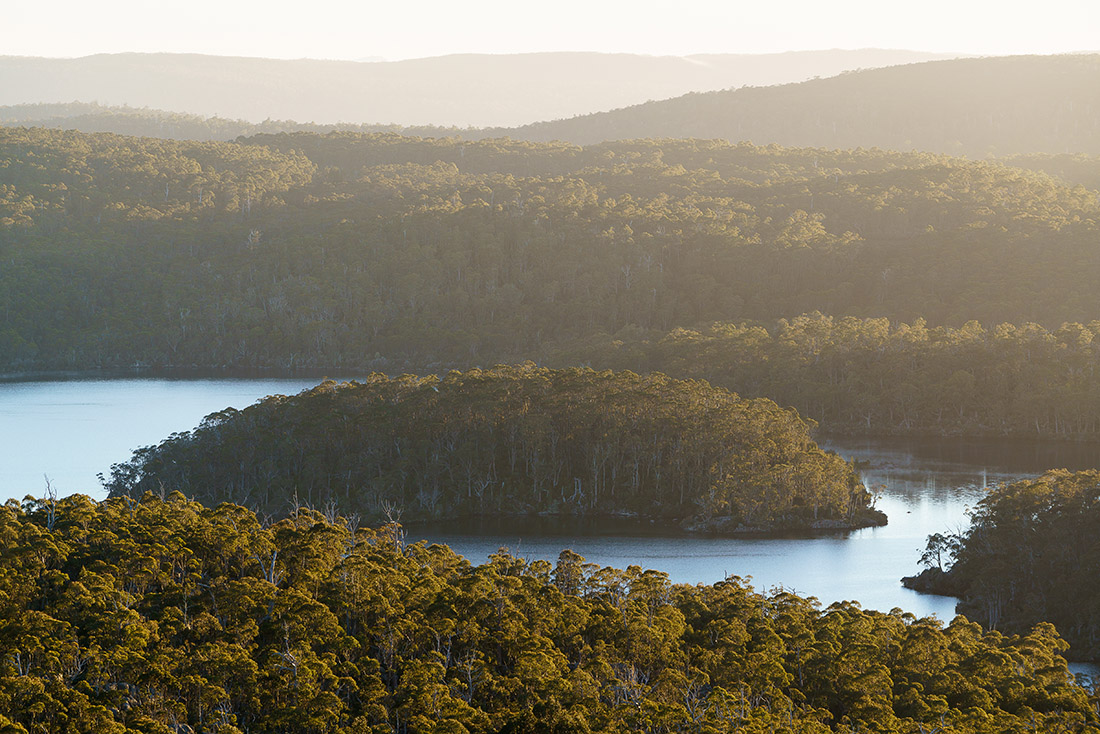
One other oft-cited rationale for lodges is that they somehow elicit a connection to wilderness among those who’d otherwise not go there. To address this, I’m going to—cheekily—reuse a paragraph from Part One; it’s a succinct response: Brett Godfrey [AWC Director] … said his target demographic was a “52-year-old single female who finds going into the wilderness not her cup of tea”. What’s Godfrey’s answer? It isn’t to take his clients to appropriate locations; it’s to make locations ‘appropriate’ to his clients by removing wilderness from the equation. As Bob Brown said during our chat: “A wilderness lodge is a non-sequitur.” Once the lodge is there, it’s no longer wilderness.
I KEEP THINKING, WHY IS THIS HAPPENING? Why, if land is being given away so cheaply? Why, if the lodges add little to state revenues? Why, if they require millions of dollars of government subsidies? Why, if the jobs created are few, or could be provided in greater numbers by other means? Why, if ‘elitism’ can be addressed by simply having others carry gear for walkers? Why, if it comes at the cost of wilderness? Why, if there are ecological costs? Why, if the public is alienated from its own lands? Why, if polls show widespread support for national parks remaining natural? Why—given all the negatives—do our political ‘masters’ allow it? What’s in it for them?
Cynics will say deals for mates. Others that they’re in on the action. I’m not going to, however, suggest corruption. Perhaps it’s as the VNPA’s Phil Ingamells told me: “[The] people generating this are high-level executive types. They fly around the world; stay in top hotels. They think that’s what everybody else does and wants.”
“National parks have been made subservient to growing tourism departments. The fox is in charge of the fowlpen.”
Beyond this, though, there are broader meta-trends at work. Firstly, the political influence of tourism industry lobbyists, like Brett Godfrey, is immense. As Bob Brown told me, “National parks, which were proud independent bureaucracies, have been throttled and made subservient to growing tourism departments. The fox is in charge of the fowlpen. It’s a very deliberate long-term strategy by the profit makers, with the public locked out.”
There’s another aspect of ‘lobbying’ by tourism departments here, not of politicians but of another influential crowd: journalists. Familiarisation tours—aka ‘famils’; think junkets for journos—are a mainstay for the travel PR industry. Sometimes they involve explicit quid pro quos; sometimes they don’t. Either way, though, after being wined, dined, and pampered to within an inch of your life, it’s extremely difficult psychologically to write anything but breathless, gushing copy. Criticising aspects of a luxurious lodge experience worth thousands that you’ve just been put up for takes a strong will indeed.
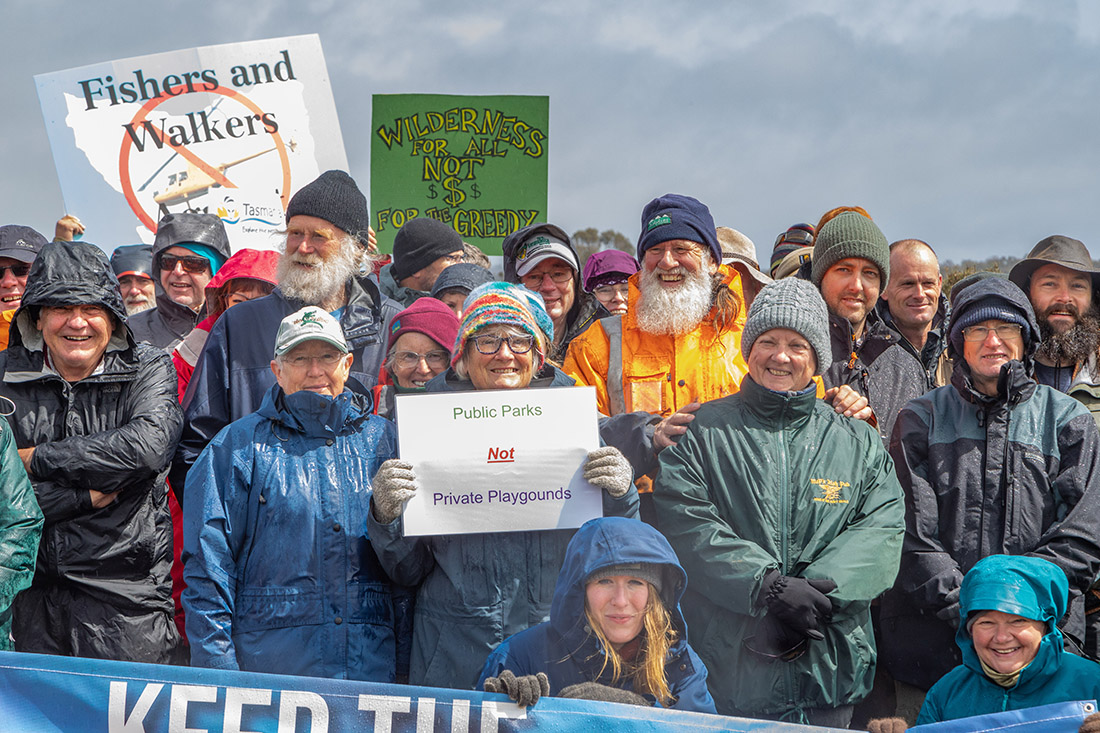
That said, not everyone in the tourism industry is on board. In November, 2020, a split in the Tourism Industry Council of Tasmania (TICT) was reported by The Australian. “There appears to be,” it wrote, “a widening revolt by operators angry at their peak body’s backing for a state government push to encourage tourist projects inside national parks.” One operator said he didn’t “want to be directly associated with” TICT’s stance on development in national parks. Another—Wild Cave Tours owner Deb Hunter—stated she wouldn’t renew her accreditation. TICT favours, she said, “tourism infrastructure that threatens the values of the world heritage property that I work on.”
But there are deeper philosophical issues at play, too, some at the very root of society; what’s happening here is emblematic of broader tensions. More than ever, the material is now preferenced over the spiritual. In short, money talks. And while luxury can be easily commercialised, the quiet, restrained joys of austerity induced by self-reliance cannot. As a result, a culture has developed that encourages many to demand luxury and ease in every conceivable instance.
There is also a clear preference on one side of politics for private-over-public. But there’s blame to share here. On both sides of the political aisle, the culture of Australia’s elected officials has all-too-frequently devolved to the point that the art of politics is now simply this: doing something isn’t important; it’s appearing to do something that’s important. And these lodge developments certainly allow politicians to seem like they are ‘doing something’. They can point to construction. They can show up in hi-viz vests. Don hard hats. “Jobs!” they can proclaim, despite there being better ways of creating them. And then they can send out media releases crowing about the fact they appear to be doing something. It’s conversely far harder for a politician to drum up interest in a media release saying that within any given park, nothing has altered in decades. “No Changes in 20 Years for Upper Cumbucka National Park.” It’s not a headline grabber, is it? But really, that’s what we want. We want to look at a beautiful area of wilderness, and know it won’t change at all.

Unfortunately, that runs counter to the developmental mindset afflicting our mainstream political class. “You can’t stop progress,” said a smug Mayor Bill Heslop in Muriel’s Wedding, for those old enough to remember it. But while Bill is fictional, his sentiment is not. Development in the minds of many politicians is not just good; development, in and of itself, is the end goal. And those damn greenies, they just want to stand in the way.
AS WITH PART ONE, I’ll conclude this with the same simple question: Where does this end? I have no answer. Influential forces and entrenched interests are at work. Few in positions of power speak out. And one lodge development will beget another, and another, and another. What I do know for sure, however, is this: once gone, wilderness doesn’t come back. It is literally irreplaceable.
James McCormack is the Editor of Wild.
A FEW SITES TO CHECK OUT:
Private Parks Not Public Playgrounds is a grassroots organisation on Kangaroo Island fighting the Flinders Chase NP development
Fishers And Walkers Against Helicopter Access Tasmania
– nqcc.org.au/save_our_national_parks
The North Queensland Conservation Council has been leading the fight against private lodge developments on Hinchinbrook Island
– npaq.org.au/current-issues/ecotourism-in-national-parks/
The National Parks Association of Queensland’s take on ecotourism
– tnpa.org.au/planning-matters/
Tasmanian National Parks Association has loads of link to planning and development issues within the state
– vnpa.org.au/hands-off-parks/
Victorian National Parks Association’s‘Hands Off Parks’ campaign

